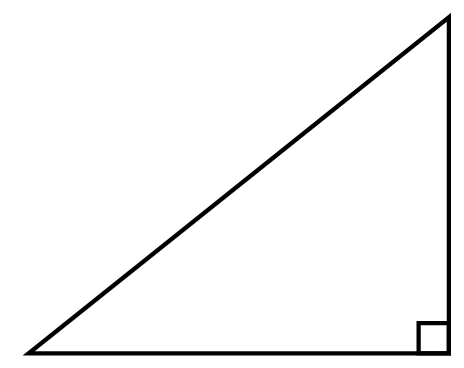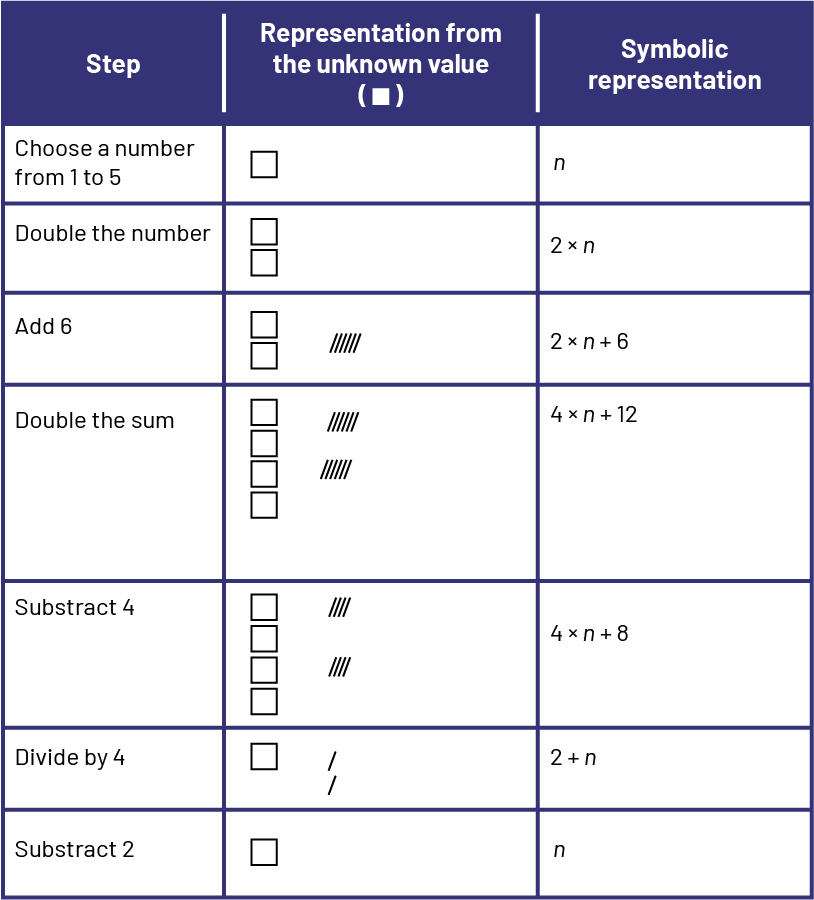C2.1 Translate among words, algebraic expressions, and visual representations that describe equivalent relationships.
Activity 1: Formula for the Area of a Triangle
Present the triangle below to the students.

Ask students to describe in words how to calculate the area of a triangle and have them represent it using an algebraic expression.
Ask questions such as:
- What algebraic expressions can represent the area of this triangle? Justify your answer.
- What connections can you make between your algebraic expression, the triangle shown, and the formula described in words.
Have students observe that when a variable is multiplied by a number, it can be written without a space, such as bh.
Activity 2: Different Representations
Read the statement below:
Ask students to represent this statement using an algebraic expression and a visual representation. Have students compare their representations to make connections between them.
Then invite students to take turns proposing a representation to the class (in words, as a visual representation or as an algebraic expression). The other students must then represent it in other ways. Pool the different representations.
Activity 3: Symbolic Representation
Display the first table for Appendix 6.4 (Symbolic Representation of the First Puzzle) for the students to see. Select a pictorial representation from the table and model for the students how to write an algebraic expression for it. Next provide students some think time and then continue modelling the other expressions. Clarify that the letter (n in the example below) replaces the circle to represent the unknown and that this symbol can mean any starting number.
Example

Divide students into teams of two and provide each team with a copy of Appendix 6.5 (Symbolic representation of the second puzzle). Ask students to write an algebraic expression corresponding to the results of each step in the second puzzle.
Example

Lead a discussion about how different algebraic expressions can represent the same relationship.
Source: translated from Guide d’enseignement efficace des mathématiques de la 4e à la 6e année, Modélisation et algèbre, pp. 184-185.
